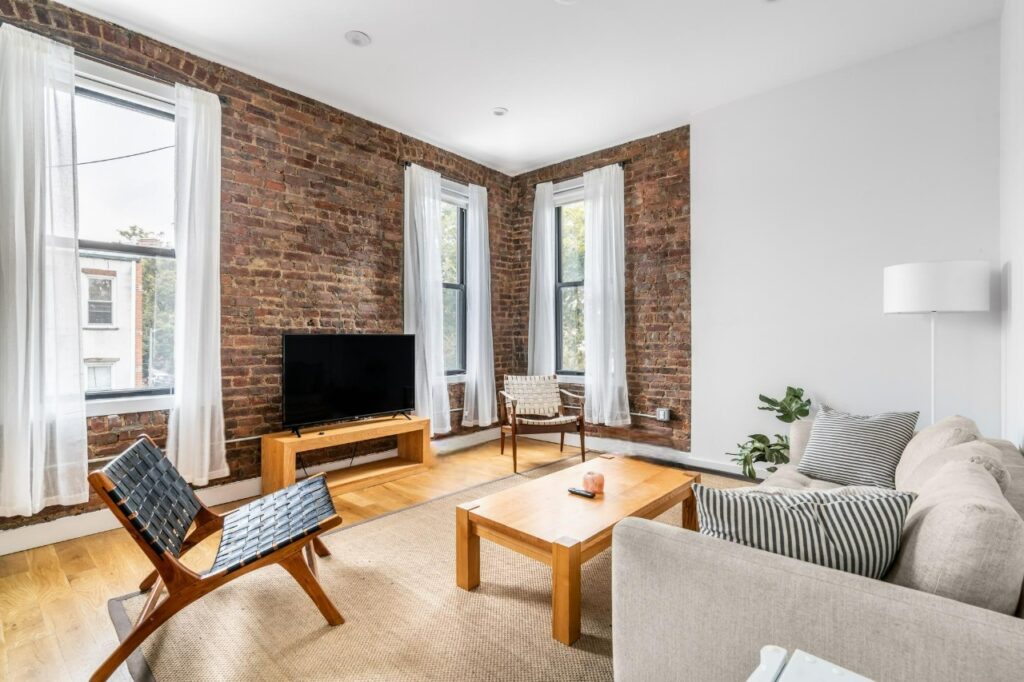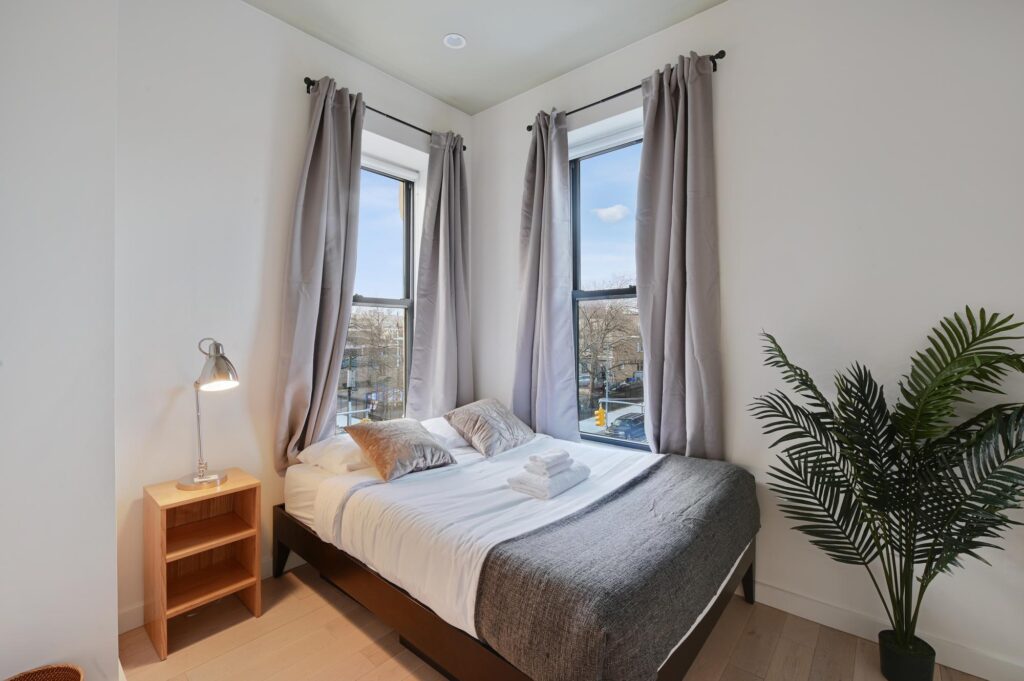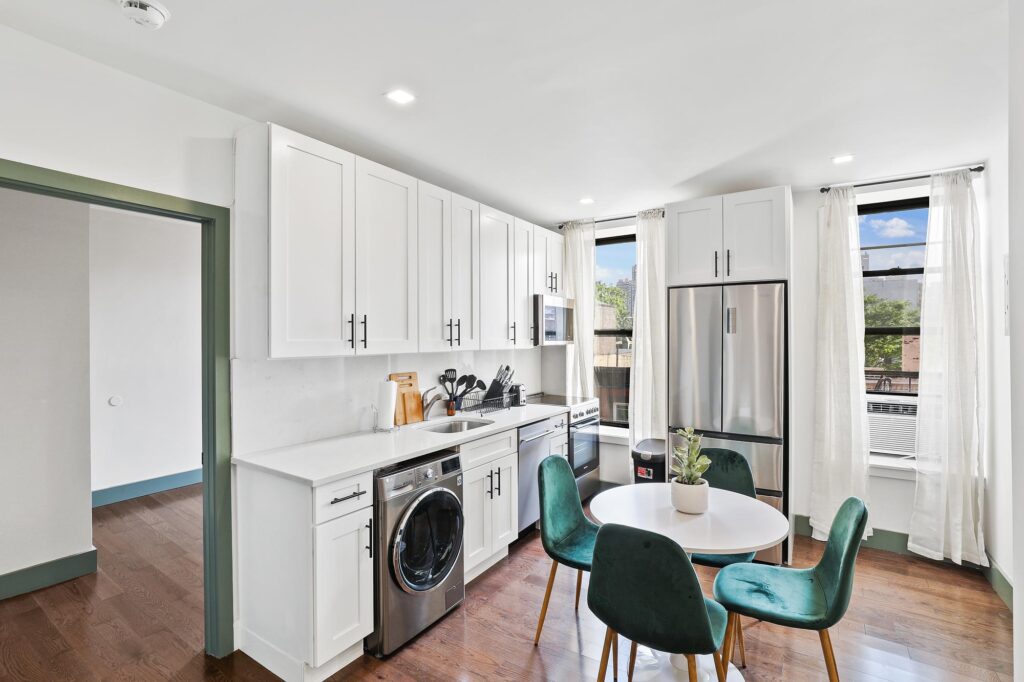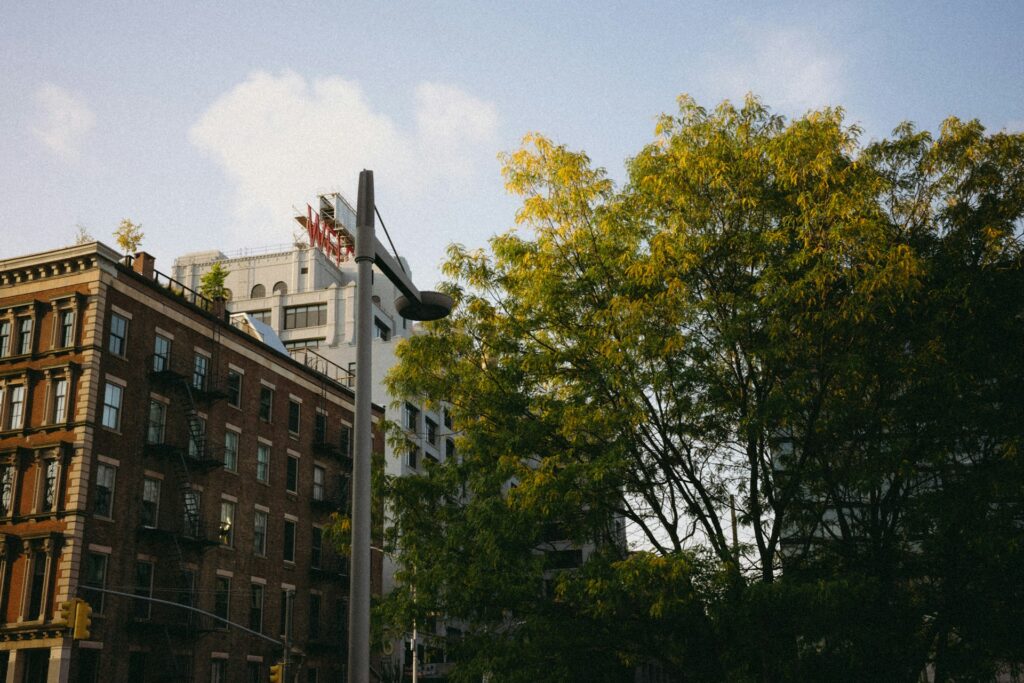
Estimated reading time: 12 minutes
Brooklyn’s brownstones or Manhattan’s skyscrapers? Your choice will shape your daily life, budget, and even your social circle.
From the moment you sign your lease, your choice between Manhattan’s pulsing energy and Brooklyn’s neighborhood vibe will determine your commute time, where you grab coffee, and even how you spend your weekends.
Starting an internship, launching your career, or just relocating?
This comprehensive guide to Brooklyn vs Manhattan will help you determine which borough aligns with your lifestyle, financial reality, and expectations for city living.
Brooklyn vs Manhattan
- Pros & Cons: Living in Brooklyn vs Manhattan at a Glance
- Who Should Choose Which Borough?
- Cost of Living Breakdown: Rent, Groceries, and Hidden Fees
- Lifestyle & Culture: Daily Life in Each Borough
- Commute & Transportation: Time vs. Cost
- Nightlife & Social Scenes: Where to Unwind
- Brooklyn vs Manhattan: Find Your NYC Home Today
Enjoy a Hassle-Free, High End Rental Experience in NYC for Stays of 1 Month or Longer.





Fully-furnished New York rooms and apartments with flexible lease. Apply today and move in tomorrow.
Pros & Cons: Living in Brooklyn vs Manhattan at a Glance
Brooklyn Pros
- Community Vibe: Brooklyn neighborhoods have a residential, family-friendly atmosphere. In Park Slope, young families and professionals mingle at weekend farmers’ markets, and neighbors chat on front porches in Ditmas Park.
- More Affordable Rent: For example, rooms often run $1,000-1,400 per month in areas like Crown Heights and Sunset Park versus Manhattan’s $1,500-2,000+ equivalents.
- Green Spaces: Unlike Central Park, Prospects Park has fewer tourists, more dogs off-leash, and community drum circles on summer Sundays. The Brooklyn Botanic Garden hosts cherry blossom festivals and winter meditation walks.
- Cultural Authenticity: Brooklyn’s cultural scene comprises food experiences like Smorgasburg’s waterfront food market, Bushwick’s street art that transforms entire blocks into open-air galleries, music venues like Brooklyn Steel, and indie film screenings.
- More Space: Larger apartments and brownstones compared to Manhattan. A $3,000 Brooklyn one-bedroom might include a separate dining area, home office nook, or even outdoor space.
Brooklyn Cons
- Longer Commutes: 30-45 minute commutes to Manhattan’s business districts. This adds up to 5-7.5 hours per week spent on trains or buses compared to Manhattan dwellers who might walk or take quick subway rides.
- Uneven Safety: Areas like East New York, Brownsville, and parts of Bed-Stuy have higher crime rates.
- Gentrification: Areas once known for affordability and artistic communities like Williamsburg are now trendy neighborhoods with luxury developments and rising rents.
- Limited Subway Coverage: Neighborhoods like Marine Park, Mill Basin, and Red Hook have limited subway access, forcing residents to rely on buses that run less frequently and experience traffic delays.
Manhattan Pros
- Unmatched Convenience: Neighborhoods like the Upper West Side offer 24-hour delis, pharmacies, and groceries within blocks of most apartments.
- Career Opportunities: Proximity to major financial institutions, tech companies, media empires, and advertising agencies in Midtown and FiDi. This translates to shorter commutes, easier networking, and spontaneous career connections.
- Cultural Access: The Museum Mile along Fifth Avenue includes the Metropolitan Museum of Art and the Guggenheim. Access to Broadway theaters, Michelin-starred restaurants, and global dining like Katz’s Deli
- Public Transit: Manhattan’s subway coverage is comprehensive, with stations typically within a 5-10 minute walk from any location.
- Prestige: Neighborhoods like SoHo, Tribeca, and the Upper East Side are globally recognized symbols of urban sophistication.
Manhattan Cons
- High Costs: In Brooklyn vs Manhattan rent, the average one-bedroom apartment in Manhattan costs around $4,000-4,500 monthly, approximately 40% higher than Brooklyn units. Coffee shops, restaurants, groceries, and services all carry Manhattan markups.
- Tourist Crowds: Areas like Times Square, Fifth Avenue, and SoHo transform into human traffic jams, particularly during peak seasons. Local establishments often cater to visitors rather than residents.
- Smaller Spaces: A typical $4,500 one-bedroom might offer just 600 square feet, with compromised layouts like windowless bedrooms or kitchens integrated into living areas.
- Noise Pollution: Manhattan’s energy comes with a constant noise—emergency vehicle sirens, garbage trucks, construction projects, and the general hum of 1.6 million residents plus daily commuters and tourists.
Who Should Choose Which Borough?
Pick Manhattan If:
You prioritize career advancement, constant convenience, and minimal commute times.
This borough makes sense for people rushing between financial district offices and Midtown meetings—for example, a Wall Street intern. Or tech professionals valuing proximity to startup hubs and creatives needing spontaneous networking access.
Manhattan suits those willing to trade space and budget for the ability to walk to work, grab gourmet takeout at midnight, and experience New York energy.
Pick Brooklyn If
You value community, green space, and more living space for your dollar.
This borough appeals to young professionals seeking community connections and prefers tree-lined streets to skyscraper canyons—for example, a remote worker seeking a quiet home office.
Brooklyn is for people willing to add 20-30 minutes to their commute. In exchange, they get more living space and a stronger sense of community.
Queens is a popular alternative if you’re looking for even more budget-friendly options. The borough has diverse neighborhoods like Astoria and Long Island City, providing Manhattan proximity with Brooklyn-like pricing.

Cost of Living Breakdown: Rent, Groceries, and Hidden Fees
When comparing Brooklyn vs Manhattan cost of living, expect to save 20-30% on rent in most Brooklyn neighborhoods, though prime areas like DUMBO now rival Manhattan prices.
Rent Comparison Table
| Category | Brooklyn | Manhattan |
|---|---|---|
| Avg. 1-Bedroom Rent | $3,200 (e.g., Bushwick) | $4,500 (e.g., Upper East) |
| Avg. 2-Bedroom Rent | $4,000 | $6,200 |
| Rooms for Rent | $1,200 – $2,500/Month | $1,800 – $3.500/Month |
| Utilities (Monthly) | $150 – $200 | $175 – $250 |
| Groceries (Weekly) | $80 – $100 | $100 – $130 |
Affordability Tips
Finding affordable housing in the best neighborhoods in NYC requires strategy, regardless of which borough you choose. Use our rent calculator to determine what you can afford based on your income and lifestyle needs.
Don’t overlook hidden gems like Brooklyn’s Ditmas Park. Victorian houses with porches and gardens rent for surprisingly reasonable rates compared to trendier neighborhoods.
In Manhattan, head uptown to Inwood, where you’ll find spacious pre-war apartments near the beautiful Inwood Hill Park and Fort Tryon Park for significantly less than you’d pay downtown.
Consider timing your move during winter when landlords offer more concessions and explore private rooms that can cut your housing costs by 30-40%.
For luxury seekers, see NYC’s Most Expensive Neighborhoods.
Lifestyle & Culture: Daily Life in Each Borough

Staying in Brooklyn vs Manhattan gives you unique lifestyle experiences.
Brooklyn
Community & Vibe:
- Families: Park Slope has stroller-friendly streets lined with brownstones and top-rated public schools. Weekend mornings mean packed playgrounds and parents chatting over coffee while kids play nearby.
- Artists/Professionals: Bushwick blends working artists’ studios with sleek coworking spaces. The neighborhood’s ever-changing street murals create an open-air gallery feeling in one of the best Brooklyn neighborhoods for young professionals.
Green Spaces
- Prospect Park provides a genuine escape with quiet wooded trails. Unlike Central Park’s mapped attractions, Brooklyn’s signature park feels like a community backyard where locals exercise, picnic, and relax.
Food Scene
- Local gems serve authentic food without Manhattan prices. L’Industrie Pizza in Williamsburg has perfect thin-crust slices, while legendary Di Fara in Midwood has been pulling the same perfect pies from the oven for generations.
Manhattan
Convenience and Pace
- Need cold medicine at 2 AM? The 24-hour pharmacy on your block has you covered. Forgot an essential ingredient while cooking? The bodega downstairs stocks it. Plus, subway access to most Manhattan neighborhoods.
Cultural Access
- Catch a gallery opening, see a comedy show, and grab late-night dumplings in Chinatown all in one evening. The Metropolitan Museum’s rooftop is the place for a summer evening escape, while Broadway shows, jazz clubs, and Katz’s Deli are regular neighborhood spots.
Work-Life Balance
- Living in Manhattan can mean walking to work or taking a quick 10-minute subway ride to Midtown or the Financial District. This proximity translates to more personal time.
Commute & Transportation: Time vs. Cost
Manhattan
Manhattan’s transportation network is unmatched in its convenience and coverage. Hop on the A/C/E lines, and you’ll be in the Financial District in 10 minutes. The 4/5/6 serves as the express backbone along the east side.
Manhattan also stands out for its exceptional walkability—90% of residents in neighborhoods like Chelsea and Greenwich Village commute to work entirely on foot.
Brooklyn
Brooklyn commutes typically range from 30-45 minutes to Midtown Manhattan (particularly from neighborhoods like Ditmas Park via the Q train). The tradeoff often comes in housing costs—you might spend more time commuting from Brooklyn, but the rent savings can be substantial.
Brooklyn has also become increasingly bike-friendly. Extensive Citi Bike coverage in neighborhoods like Williamsburg and Downtown Brooklyn offers a healthy and sometimes faster alternative to public transit during rush hours.
Pro Tip: Use Roommate Finder Apps to split costs near transit hubs.
Safety: Neighborhood-by-Neighborhood Guide
Manhattan
- Safest Areas: The Upper East Side and Battery Park City stand out as some of the safest Manhattan zones, with crime rates as low as 12 per 1,000 residents.
- Avoid Late Nights: Times Square, despite being heavily policed, can be problematic late at night when tourist crowds thin out. East Harlem has seen improvements in recent years but still experiences higher crime rates than other parts of Manhattan.
Brooklyn
- Safest Areas: Many Brooklyn neighborhoods now have lower crime rates than parts of Manhattan. Brooklyn Heights and Park Slope lead the pack with crime rates of around 10 per 1,000 residents, making them among New York City’s safest neighborhoods.
- Use Caution: Neighborhoods like East New York and Brownsville continue to face higher crime rates and require additional caution, particularly after dark.
Nightlife & Social Scenes: Where to Unwind
Brooklyn vs Manhattan nightlife: Manhattan has upscale clubs and historic venues at premium prices. Brooklyn provides diverse, authentic experiences with indie venues at lower costs.
Brooklyn
- Dive Bars: Enjoy Brooklyn’s nightlife in dive bars that won’t drain your wallet, like Sunny’s Bar in Red Hook with live bluegrass and maritime charm or The Levee in Williamsburg with cheap beer and free cheese balls.
- Music Venues: For music, Brooklyn Steel in East Williamsburg hosts indie and alternative acts in an industrial-chic warehouse. House of Yes in Bushwick features EDM dance parties and theatrical performances.
Manhattan
- Upscale Lounges: Choose from upscale Manhattan’s lounges like The Skylark in Midtown with panoramic city views and craft cocktails. Bemelmans Bar at The Carlyle presents old-world luxury with live piano and hand-painted murals.
- Historic Spots: For entertainment, The Comedy Cellar in Greenwich Village remains a legendary spot where top comedians regularly drop in for surprise sets. Manhattan’s nightlife spans distinct neighborhood scenes – from the Lower East Side’s trendy bars to Hell’s Kitchen’s LGBTQ+ venues and Harlem’s historic jazz clubs.
FAQs
Is Brooklyn cheaper than Manhattan?
Yes, but trendy neighborhoods like DUMBO and Williamsburg rival Manhattan prices.
Which borough is safer?
Both Manhattan and Brooklyn have safe zones and areas requiring more caution. Make safety comparisons at the neighborhood level rather than borough-wide
Do I need a car?
Rarely—subways cover most areas, but outer Brooklyn neighborhoods like Marine Park have limited subway access.
Why do Italians live in Brooklyn?
Italian Americans established historic enclaves in Brooklyn neighborhoods like Bensonhurst, Carroll Gardens, and Dyker Heights. Many families maintain cultural roots across generations.
Where do celebrities live?
Celebrities live in Manhattan’s Tribeca (where Taylor Swift owns a loft), Brooklyn Heights (home to Adam Driver’s brownstone), and Park Slope.
What’s the most spoken language?
English, but Spanish, Mandarin, and Russian are common.
Do more people live in Manhattan or Brooklyn?
Brooklyn has a larger population, ~2.6 million, than Manhattan’s 1.6 million.
Why do people love Brooklyn?
People love Brooklyn for its strong community vibe, rich cultural diversity, relative affordability compared to Manhattan, neighborhood character, and ample green spaces.
Is Brooklyn smaller than Manhattan?
No—it’s 3x larger in area.
What food is Brooklyn famous for?
Brooklyn is famous for its iconic pizza (especially at Grimaldi’s and Di Fara), authentic New York cheesecake (Junior’s in Downtown Brooklyn), and artisanal food markets like Smorgasburg and DeKalb Market Hall.
Brooklyn vs Manhattan: Find Your NYC Home Today
Between living in Brooklyn vs Manhattan, both boroughs offer unique advantages for different lifestyles and experiences. The right choice depends on your priorities—commute, budget, social scene, and the vibe you’re seeking.
Don’t overthink it; many New Yorkers move between boroughs as their needs change. Whether you crave Manhattan’s energy or Brooklyn’s charm, June Homes simplifies your search.
Browse our extensive list of affordable Brooklyn rooms and flexible Manhattan rentals to find your perfect NYC home.
